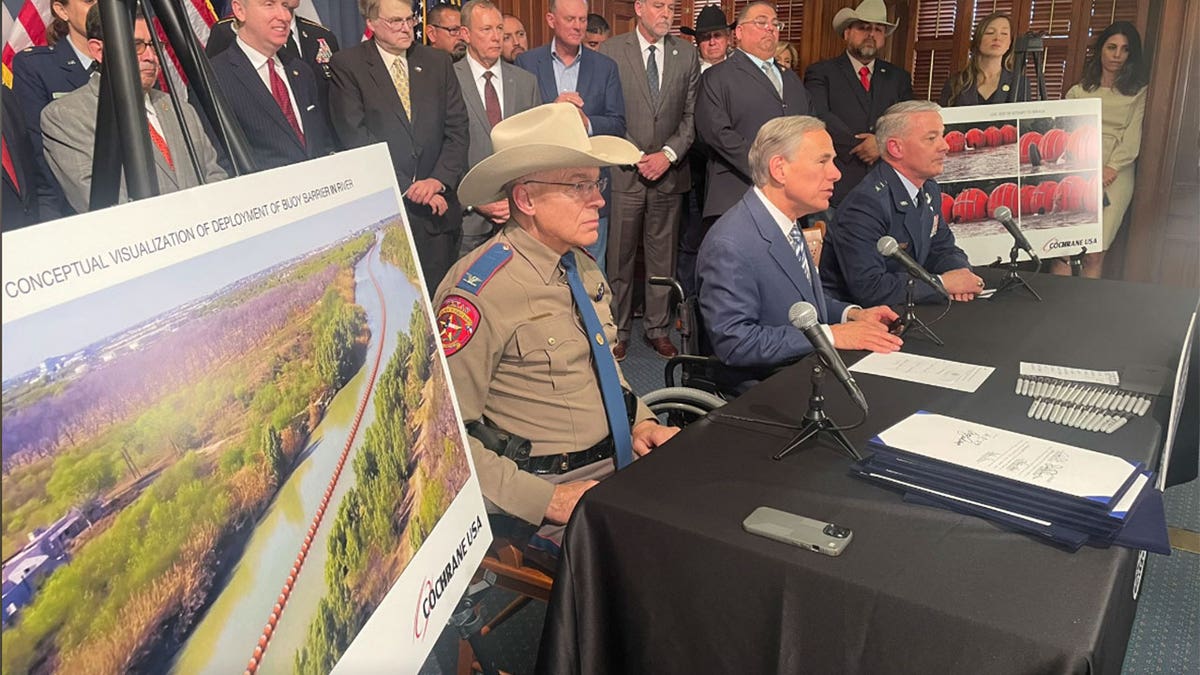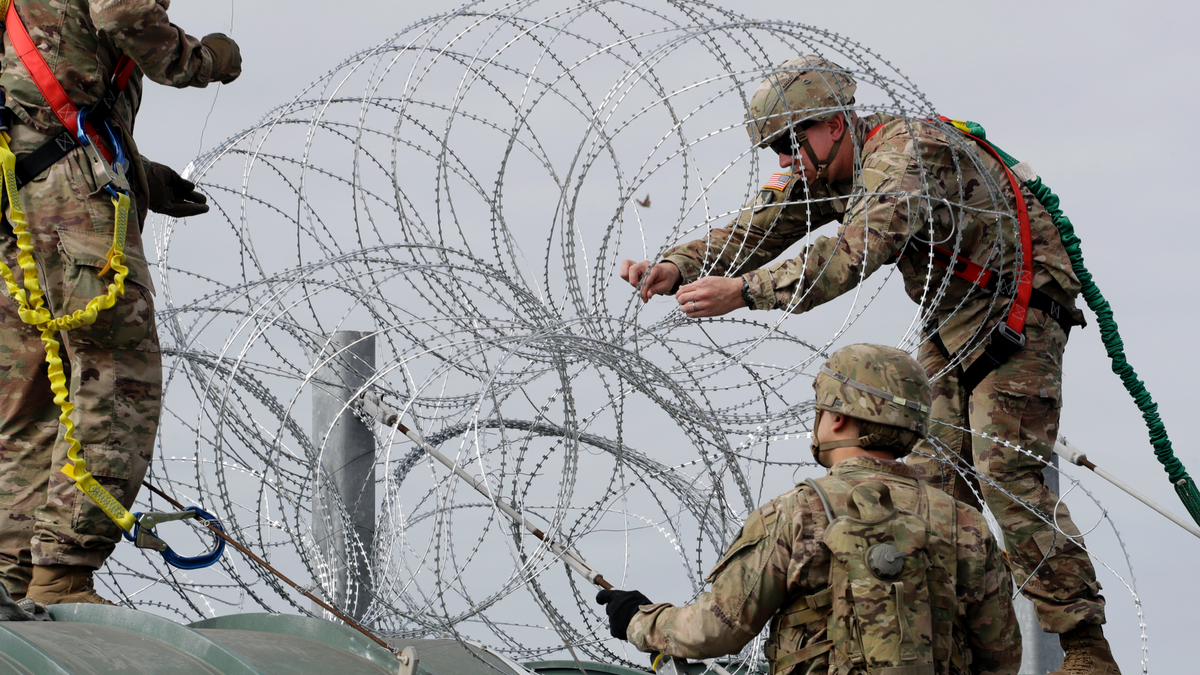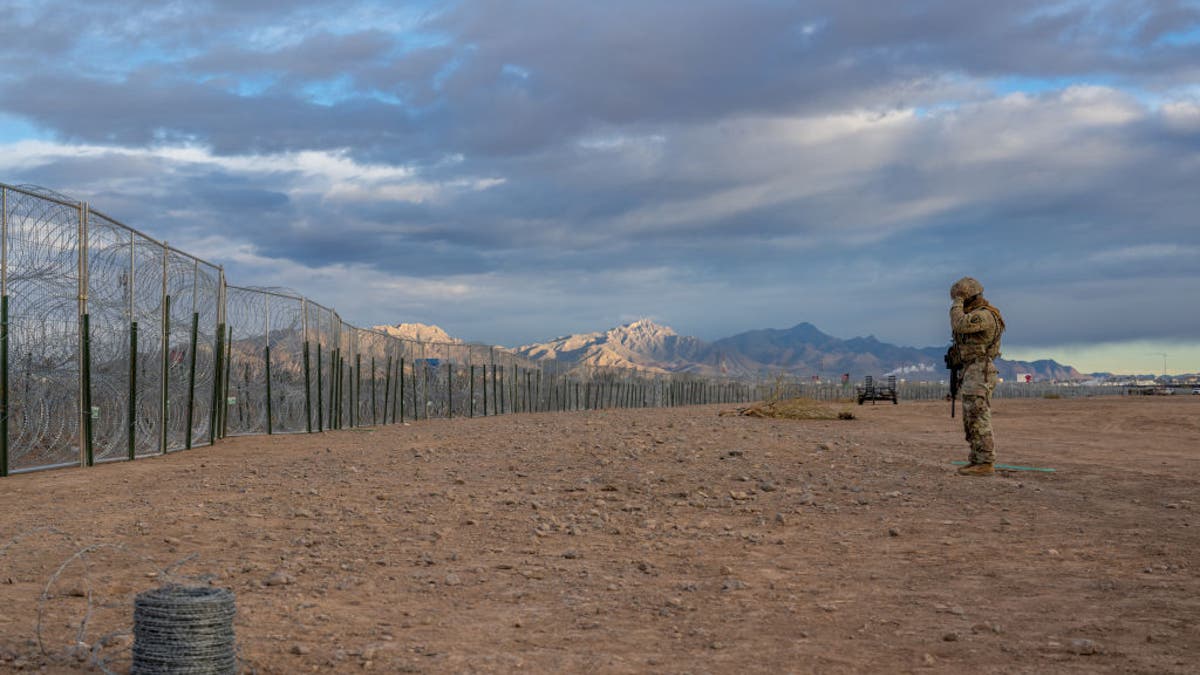The debate surrounding Texas' extensive use of razor wire fencing along the U.S.-Mexico border continues, with proponents citing its effectiveness in deterring illegal crossings and critics raising concerns about humanitarian consequences. Over the past two years, Texas has invested heavily in erecting over 100 miles of this barrier, primarily at key migrant crossing points. This initiative is part of "Operation Lonestar," a multi-billion dollar border security campaign.
Recently, a federal appeals court sided with Texas, rejecting the Biden administration's attempt to halt the deployment of the razor wire, often referred to as concertina or "c-wire." This legal victory follows an incident in September 2023 where U.S. Border Patrol agents removed some of the wire installed by Texas.
Texas Governor Greg Abbott has defended the state's actions, arguing that the federal government should be appreciative of Texas' efforts to secure the border, given what he perceives as a lack of federal action. He contends that Texas has filled a void left by the Biden administration.

Governor Abbott during a border press conference. (Gov. Greg Abbott's Office)
The central question remains: does the razor wire truly deter illegal immigration, and does its effectiveness outweigh the potential costs? Andrew Arthur, an immigration policy expert, firmly believes it does. He highlights data from U.S. Customs and Border Protection indicating a significant decrease in illegal crossings in Texas after the wire's installation. Arthur attributes this decline to the wire's deterrent effect, particularly after the expiration of Title 42 and the subsequent migrant surge in December 2023.

U.S. military personnel installing razor wire at the U.S.-Mexico border. (AP Photo/Eric Gay)
Arthur suggests that the wire has redirected migrant flows westward, making the journey significantly longer and more arduous for those attempting to cross illegally.
However, the use of razor wire is not without its challenges. It requires ongoing maintenance and replacement, unlike a permanent wall. The logistical demands on Texas state troopers, many deployed far from home, also raise concerns about the long-term sustainability of this approach.

A Texas National Guard soldier patrolling near the Rio Grande. (Photo by Brandon Bell/Getty Images)
Humanitarian concerns are also prominent in the debate. While Arthur argues that the wire's deterrent effect prevents dangerous crossings of the Rio Grande, Dylan Corbett of the Hope Border Institute counters that it has led to increased injuries and even deaths among migrants. Corbett reports treating families injured by the wire, as well as injuries from projectiles allegedly fired by the National Guard. He points to a rise in border deaths in El Paso, attributing it to the wire forcing migrants to more dangerous crossing areas west of the city.

A migrant family encountering razor wire at the border. (John Moore/Getty Images)
Corbett urges the federal government to take greater control of border management and address systemic issues, arguing that the current situation, with states taking independent action, poses unnecessary risks to migrants and wastes taxpayer money.
Comments(0)
Top Comments